The Pueblos are the village agriculturists of New Mexico and Northern Arizona. Zuni Pueblo is located in New Mexico and its name comes from Spanish corruption of the Keresan word Sunyi. The native name for the pueblo is A’shiwi which means “the flesh.”
Fetishes are objects which can be made from many different materials which can be used in helping people deal with the problems of daily life. Among the Zuni each fetish contains a living power which can give help to its owner if it is treated properly. This care includes ceremonially feeding the fetish with its own corn meal.
The use of fetishes among the people of Zuni is an ancient custom. In his book An Introduction to Southwestern Indian Arts & Crafts, Tom Bahti writes:
“Any object may be used as a fetish; arrow points, concretions, shells, or plants. A spirit is believed to dwell in the object which can give assistance, in the form of supernatural power, to its owner.”
Tom Bahti also writes:
“The most common fetishes seen on the market are the ones used for hunting. They may be carved from shell, stone or antler.”
Norman Feder, in his book American Indian Art, writes:
“The animal fetishes made of hard stone probably represent the highest development of stone carving among Indians in historic times.”
Zuni fetishes are used for many things: hunting, initiations, diagnosing and curing illnesses, war, gambling, propagation, and witchcraft. With regard to witchcraft, the fetish may be used for casting a spell or it may be used for detecting the fact that the spell has been cast, or it may be used as protection against spells.
Today Zuni fetishes, particularly those carved in stone, shell, and antler, are highly desired by non-Zuni collectors who consider them as works of art. Most frequently the fetishes which are sold to collectors are hunting fetishes. In his introduction to Frank Hamilton Cushing’s book Zuni Fetishes, Tom Bahti reports:
“Because of the demand by collectors a number of facsimile reproductions of clan or society fetishes (referred to by the trade as ‘Kiva fetishes’) are produced.”
In addition, Zuni carvers also make a large number of birds and animals that are not used as fetishes. Figurines of dogs, rabbits, owls, and humans would fall into this non-fetish category.
The Los Angeles County Natural History Museum has a small display of Zuni fetishes from the Boyd and Mary Evelyn Walker Collection. According to the Museum display:
“Native American peoples of the American Southwest have carved small animals from stone and shell since ancient times. Today, the best known carvers come from the Pueblo of Zuni, where artists make many kinds of little animals, also called fetishes.”
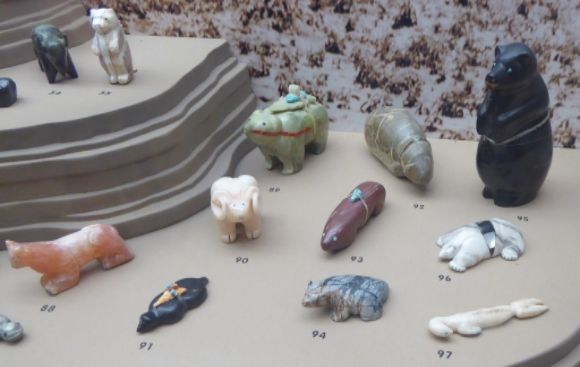


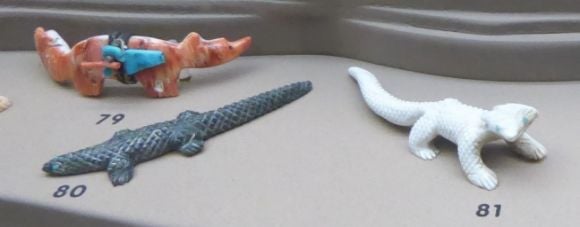
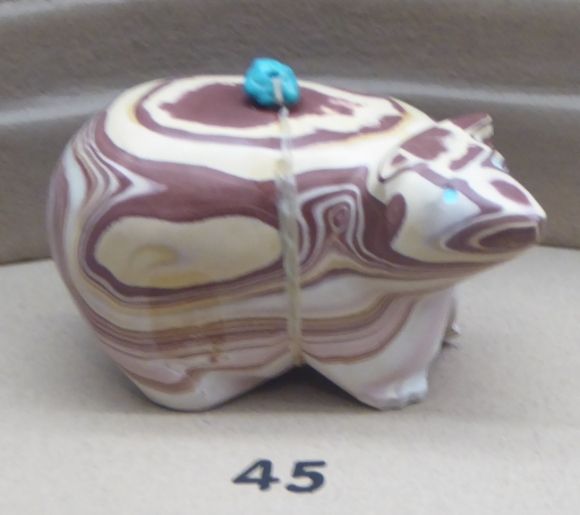 Shown above is a bear by Ohmsattie (1992)
Shown above is a bear by Ohmsattie (1992) 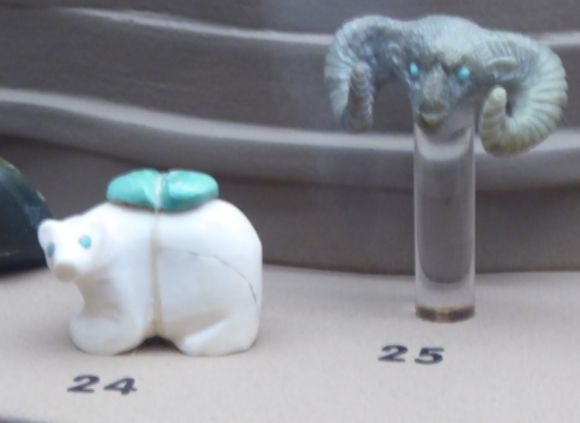 Shown above are a bear (24) by Dan Poncho (1989) and a ram’s head by Wilfred Cheama (1990)
Shown above are a bear (24) by Dan Poncho (1989) and a ram’s head by Wilfred Cheama (1990) 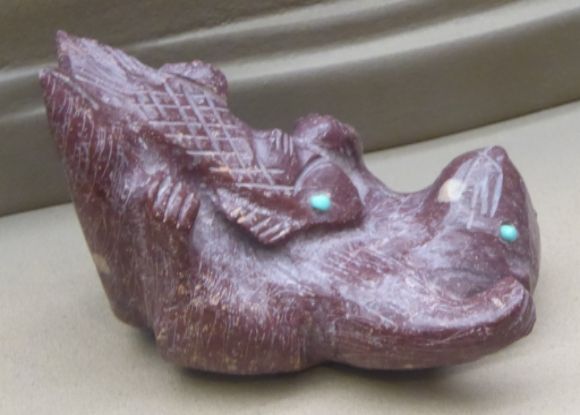 Shown above is a sea otter with fish by Max Laate (1990)
Shown above is a sea otter with fish by Max Laate (1990) 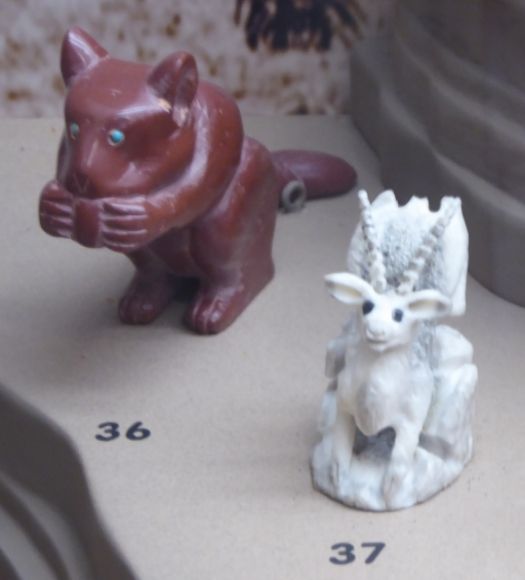 Shown above are a mouse (36) by Pernell Laate (1988) and a gazelle (27) by Pernell Laate (1991)
Shown above are a mouse (36) by Pernell Laate (1988) and a gazelle (27) by Pernell Laate (1991)
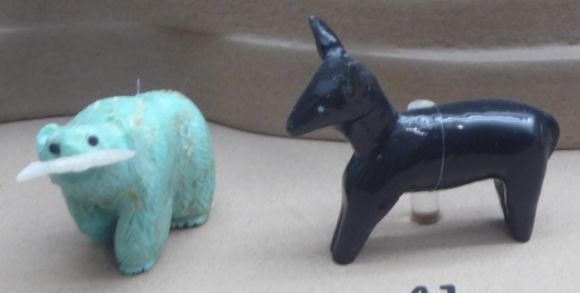 Shown above are a bear with fish (40) by Colvin Peina (1992) and a deer by Rhoda Quam (1987)
Shown above are a bear with fish (40) by Colvin Peina (1992) and a deer by Rhoda Quam (1987)
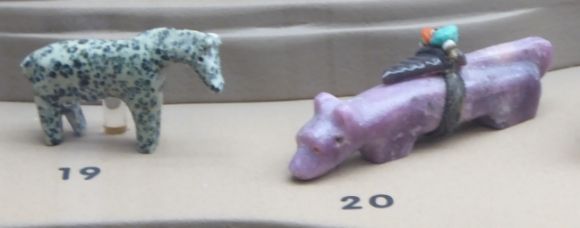 Shown above are a horse (19) by Ellen & Faye Quandelacy (1984) and a mountain lion (20) by Anderson Weahkee (1985)
Shown above are a horse (19) by Ellen & Faye Quandelacy (1984) and a mountain lion (20) by Anderson Weahkee (1985)
 Shown above is a humming bird by F. Cheama (1982)
Shown above is a humming bird by F. Cheama (1982)  The 1992 dinosaur carving by Nelson Yatsattie is obviously not a traditional Zuni fetish.
The 1992 dinosaur carving by Nelson Yatsattie is obviously not a traditional Zuni fetish. 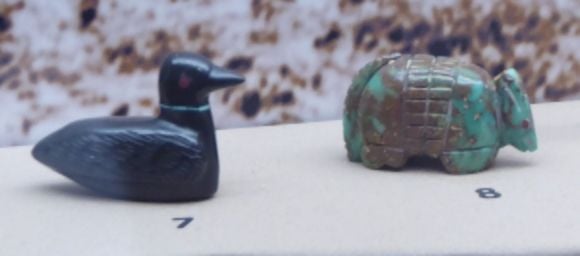 Shown above are a duck (7) by Jane Quam (1985) and an armadillo by Gordon Poncho (1987)
Shown above are a duck (7) by Jane Quam (1985) and an armadillo by Gordon Poncho (1987)
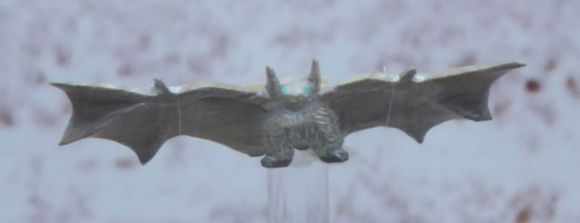 Shown above is a bat by Herbert Hustito (1991)
Shown above is a bat by Herbert Hustito (1991)
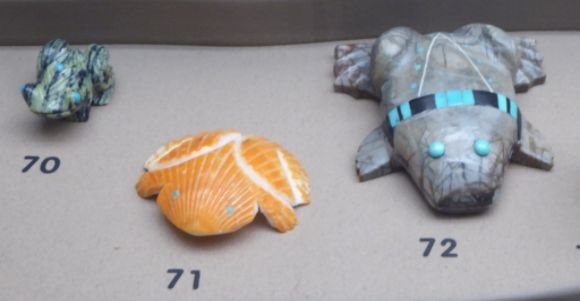 Shown above are a frog (70) by Herbert Hustito (1986), a frog (71) by Andrew Quam (1985) and a frog (72) by Peter Natewa (1992)
Shown above are a frog (70) by Herbert Hustito (1986), a frog (71) by Andrew Quam (1985) and a frog (72) by Peter Natewa (1992)
 Shown above is a lizard by Kent Banteah (1989)
Shown above is a lizard by Kent Banteah (1989) 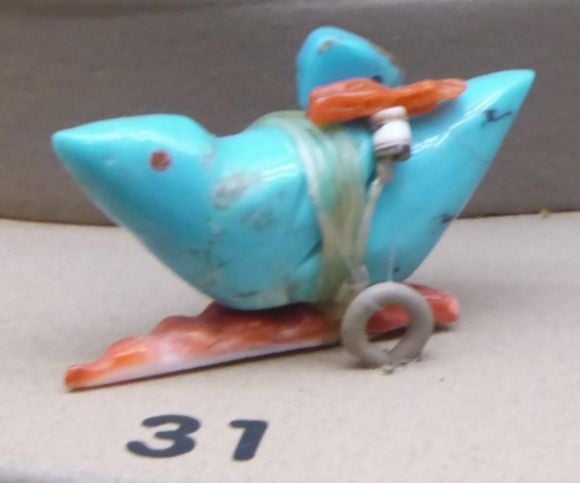 Shown above is an eagle by Lena Boone (1989)
Shown above is an eagle by Lena Boone (1989) 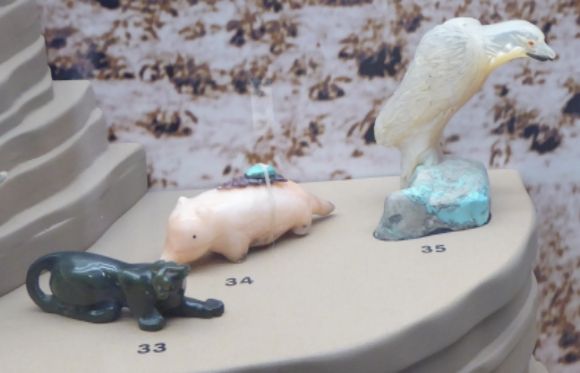 Shown above are a mountain lion (33) by D. Quam (1983), a mole (34) by Aaron Scheche (1988), and an eagle (35) by Quandelacy (1980)
Shown above are a mountain lion (33) by D. Quam (1983), a mole (34) by Aaron Scheche (1988), and an eagle (35) by Quandelacy (1980)  Shown above is a bear by Rickson Kalestewa (1986)
Shown above is a bear by Rickson Kalestewa (1986) 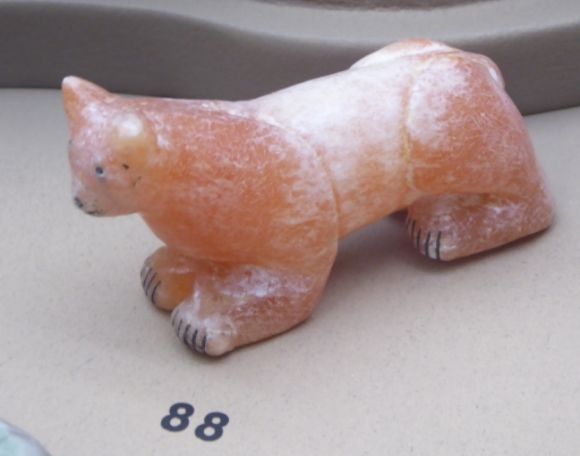 Shown above is a wildcat by Rickson Kalestewa (1990)
Shown above is a wildcat by Rickson Kalestewa (1990) 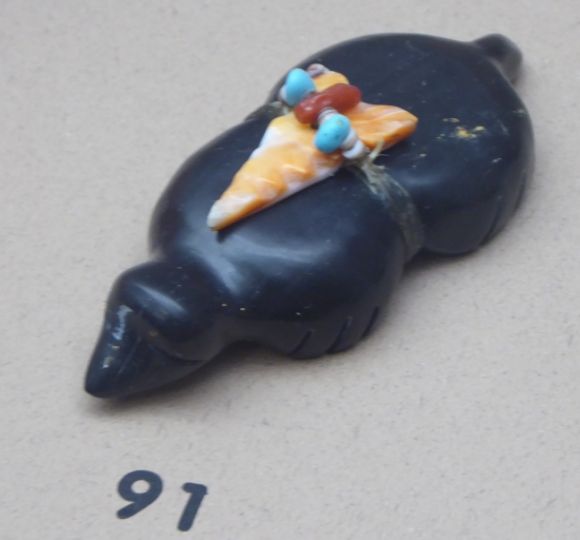 Shown above is a mole by Leland Boone (1990)
Shown above is a mole by Leland Boone (1990) 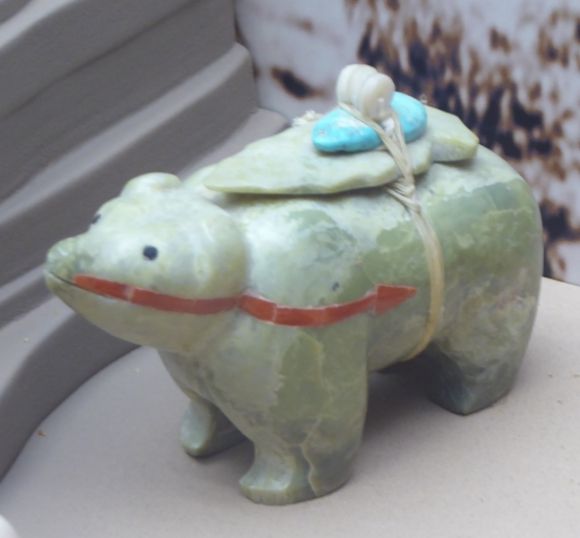 Shown above is a bear by Bernard Homer Jr. (1970)
Shown above is a bear by Bernard Homer Jr. (1970) 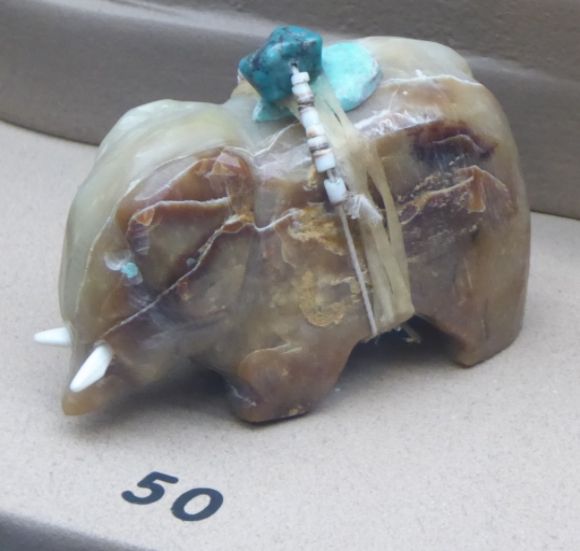 Shown above is an elephant by Leonard Halate (1982)
Shown above is an elephant by Leonard Halate (1982) 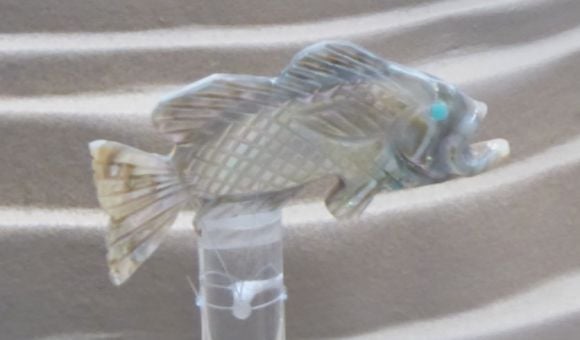 Shown above is a bass by Terry Banteah (1991)
Shown above is a bass by Terry Banteah (1991) 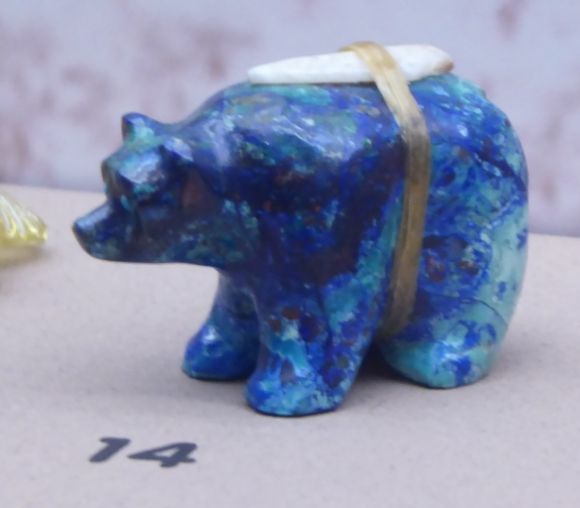 Shown above is a bear by Vernon Lunasee (1988)
Shown above is a bear by Vernon Lunasee (1988) 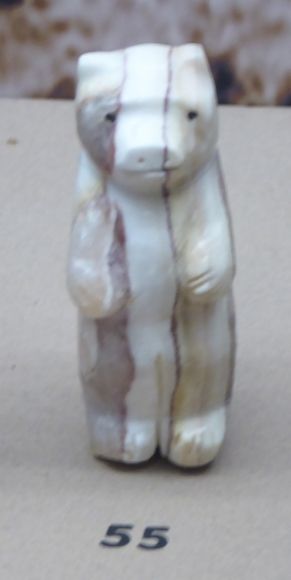 Shown above is a bear by an unknown carver (1982)
Shown above is a bear by an unknown carver (1982)

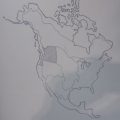

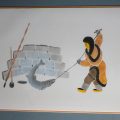
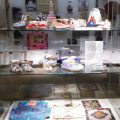
Leave a Reply